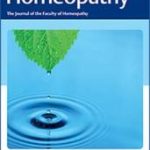Francisco X. Eizayaga, Omar Aguejouf, Philippe Belon, Christian
Platelet Aggregation in Portal Hypertension and Its Modification by Ultra-Low Doses of Aspirin
Pathophysiol Haemost Thromb, 2005, 34 (1), 29-34

Aspirin (ASA) is widely accepted as antithrombotic drug, but several reports point out that its use in ultra-low doses (ULD) has prothrombotic properties. In this study, we evaluate the effect of portal hypertension in rats on platelet aggregation in an in vivo arterial thrombosis model induced by a laser beam. Portal hypertension was produced by calibrated stenosis of the portal vein. ASA in ULD was injected to both control and portal hypertensive groups. Platelet aggregation induced by ADP, prothrombin time, activated partial thromboplastin time, fibrinogen and induced hemorrhagic time test were also performed. Portal hypertensive rats showed a diminished number of emboli and duration of embolization in the laser procedure and an increase in induced hemorrhagic time. These changes were reverted by one injection of ASA at ULD. This observation could be of importance for primary prevention or the treatment of recurrence in upper digestive tract hemorrhage in portal hypertensive patients.





